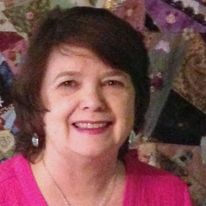
Mary Morphis Moody
Died June 7, 2024
The Woodlands, Houston, Texas
Mary Morphis Moody, former editor of The Daily Texan and longtime suburban editor for the Houston Chronicle, died June 7, 2024, in Conroe.
She worked in various reporting and editing positions for newspapers before coming to the Chronicle.
Mary was the original suburban editor at the Chronicle when that desk was created. She retired in 2000.
Mary and and Jim Moody were longtime residents of The Woodlands.
They were fellow UT journalism students and met in 1966 while walking across the UT campus. They were married while she was editor of The Daily Texan on Dec. 22, 1967, in Austin.
They had a long and happy marriage, were proud parents of Benjamin Moody and had a close relationship with granddaughter Eris Moody. Jim passed died in January 2023. Mary loved her quilting bee and taking nature photos.
Mary is to be buried at Houston National Cemetery, where her husband Jim is buried.
Longtime co-worker Fernando Dovalina remembers her as a fine editor with a great sense of humor, which was always smart and occasionally wicked.
“Her laughter was infectious. She was well loved in the newsroom, often playing a mama role to countless young reporters under her wings.
“She was a proud Longhorn, and she and I shared many moments reminiscing about our alma mater. She was hard-working, conscientious, and ethical to a fault. “ Dovalina said.
“What I most remember about her, however, was her survivor story, he added.
Moody was an incoming junior at the University of Texas in August 1966. She and her mom and dad were on campus when Charles Whitman climbed to the top of the UT tower and began shooting and killing people below.
Before his arrival at UT, Whitman had stabbed and killed his mother and wife. As he climbed the tower, he shot and killed three more people. Once at the top, he shot and killed 11 more, a total of 16 victims. A 17th died years later from the injuries suffered that day. Thirty-one people were wounded. The assault lasted 96 minutes. Austin police officers confronted Whitman, shot and killed him, ending the siege.
This is Mary’s recollection of that horrific day.
—
On Aug. 1, 1966, my parents and I parked under a shade tree at the edge of the University of Texas campus and set out for the Main Building. That beautiful tower seemed to be the perfect first stop for my first-ever visit to the university.
Charles Whitman got there first.
We heard students and policemen yelling. A race riot? An anti-Vietnam demonstration? We wondered, but we weren’t concerned.
Nor did we give serious thought to the little puffs of dust following our footsteps or the people sprawled on the grass. We didn’t identify the loud pops we later realized were gunfire.
Whitman had brought his own personal war to the campus and we, oblivious, walked right through it.
We casually followed others into the glass-walled library. As my mom stopped to admire a fountain, I straightened the polka dot dress I had sewn for the occasion — my first visit to the university and the town I still love.
For two hours, we found refuge in that library and listening to a radio broadcast, and we finally realized we were in the middle of death.
I stood in line at a telephone booth to call my editor at the Tyler Morning Telegraph, where I was a summer intern. Of course, he wanted a story.
I talked to people and jotted notes of what we saw: a man trying to hide at the base of a narrow flagpole, others huddled behind bushes, a student grabbed as he ran for the library door saying he was late for class. I probably gave my parents gray hair as I peered through those doors.
Nothing made much sense that sunshiny day. Why would anyone shoot at people just walking across a beautiful campus? Why did the shooter — who I later learned was a highly trained marksman — miss me in that dress with nickel-sized polka dots?
“Why?” The question that haunted us for years. Today, we know some, but not all, of the answers. We know Whitman had a history of childhood abuse. He realized something was wrong with his thinking and sought help. An autopsy discovered a brain tumor that could at least partly explain his pain and actions.
Until Aug. 1, 1966, mass murder in a public place was unimaginable. SWAT teams didn’t exist. We gave no thought to walking across a college lawn, sending our children to school, going to a theater, enjoying a Paris parade.
When Whitman unleashed his private hell, was he the harbinger — possibly the architect — of evil that still reverberates throughout our world?
And more important: Can it be stopped?
